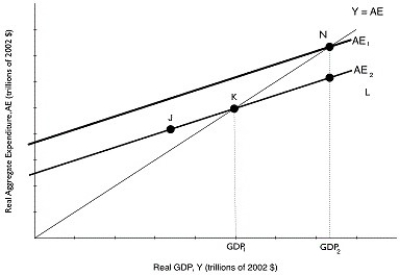Figure 8.7  Alt text for Figure 8.7: In figure 8.7, a graph comparing real GDP and real aggregate expenditure.
Alt text for Figure 8.7: In figure 8.7, a graph comparing real GDP and real aggregate expenditure.
Long description for Figure 8.7: The x-axis is labelled, real GDP, Y (trillions of 2002 dollars) .The y-axis is labelled, real aggregate expenditure, AE (trillions of 2002 dollars) .Line AE1, begins a little less than half way along the x-axis and slopes up to the end of the x-axis.Line AE2, is to the right of AE1 and is on a similar path as line AE1, sloping up to the top right corner.Line Y = AE, originates at the vertex and slopes up to the top right corner.Line Y = AE meets line AE2 at point K, half way along both the lines, and meets line AE1 at point N, plotted close to the right end of line AE1.Point J is plotted a little less than half way along line AE2, to the left of point K.Point L is marked close to the right end of line AE2, to the right of point K.
-Refer to Figure 8.7.Suppose that government spending increases, shifting up the aggregate expenditure line.GDP increases from GDP1 to GDP2, and this amount is $200 billion.If the MPC is 0.8, then what is the distance between N and L, or by how much did government spending change?
A) $16 billion
B) $40 billion
C) $160 billion
D) $200 billion
E) $1,000 billion
Correct Answer:
Verified
Q240: In the aggregate expenditure model, _ has
Q241: Table 8.13 Q242: If the multiplier is 10,the marginal propensity Q242: The multiplier is calculated as the change Q244: If an increase in investment spending of Q246: Assume proponents of public funding for a Q247: If an increase in autonomous consumption spending Q248: In 2007-2008, exports from Canada to the Q249: Economists think that the marginal propensity to Q250: Figure 8.7 ![]()
![]()
Unlock this Answer For Free Now!
View this answer and more for free by performing one of the following actions

Scan the QR code to install the App and get 2 free unlocks

Unlock quizzes for free by uploading documents